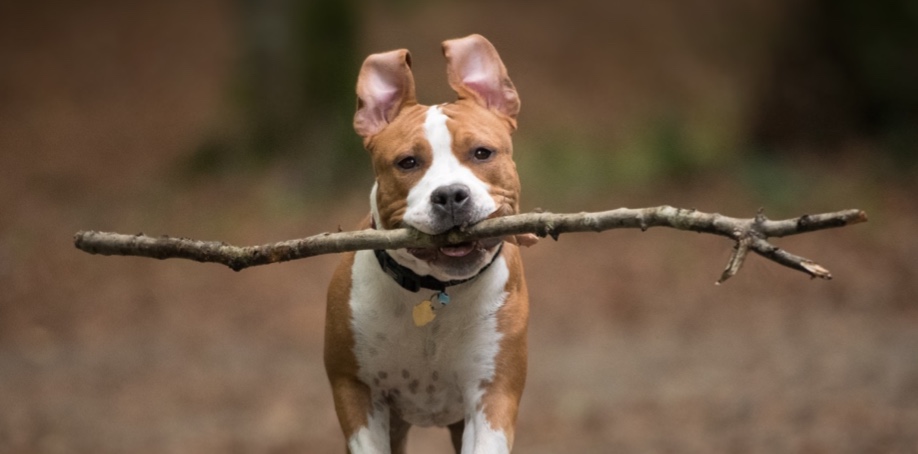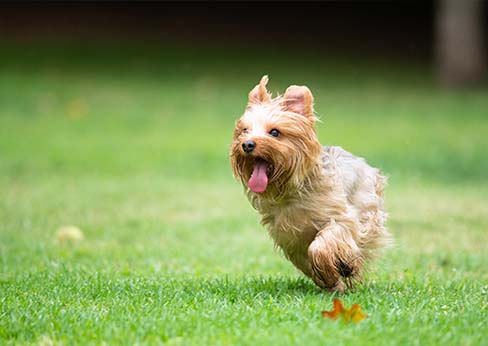
As your dog’s training progresses, you eventually want to give your furry friend some freedom off-leash. This freedom, however, is dependent on your ability to recall your dog on-cue. Teaching your dog to come is one of the most important commands your dog will learn, and the trust instilled after they learn to consistently return to your side only expands their potential area of exploration. Follow the steps below to teach your dog to come!
Step 1: Introduce the Command and Lure with Treats
- Always start off in a low distraction area. You want your dog’s attention to be solely on you. Start in a quiet room, and then move to your backyard as they start to learn the command.
- Keep a short distance between you and your dog. You want to start small and then work your way up to larger distances.
- Say your dog’s name and then the command. Speak slowly so your dog can identify that you are talking to them, and then tell them what you want them to do: “Bella, COME!”
- Lure your dog towards you with a treat while you take a step back. Your dog should move towards the treat, effectively ‘coming’ to you.
- When your dog comes to you, reward with the treat and verbal praise. You want to convince your dog that they will be rewarded in some regard when they come to you. Although there won’t be a treat every time you call them, luring with a treat is a surefire way to associate the command with positive feelings and trust.
- Release your dog. As you have used in other commands, give the release command and allow your dog to return to their original position. Releasing your dog teaching them to trust you and dissuades the idea that coming to you will ruin their fun for the day.
Step 2: Without the Treats
Now that you’ve familiarized your dog with the “COME” command, it’s time to remove the treat-incentive. Although your dog should not expect to be fed whenever they come to you, you want them to be excited to return to their owner. For this reason, always display positivity when your dog comes to you.
- Put the treats away. It is ok (if not encouraged) to have treats in your pocket just in case emergency reinforcement, but you want your dog to practice their recall responding solely to your voice.
- Increase the distance between you and your dog. Say their name and then say the command, just like you were doing before.
- When they come to you, reward with verbal praise. Don’t be afraid to make a big deal out of this – give your dog a BIG pat on the head and a scratch on the belly. Make your dog aware that they did something right.
- Release. Again, make sure that you always release your dog from a come. You want them to trust that following your command will not be a definitive negative experience.
Step 3: Generalize
Recall is one thing in an isolated environment, but it is a whole different animal (no pun intended) when other distractions are present. Generalizing the “COME” command dissuades association between the command and a specific location. Practice your dog’s recall in a variety of different environments.
- Start practicing recall in busier places than your house. Have your dog come to you when they’re playing with dogs or greeting other humans.
- When your dog is off-leash, periodically have them come to you and then release. You want to practice recall when your dog is not expecting the command, but you also want to show your dog that, with your release, they can go back to the fun after coming to you.
Troubleshooting: My Dog Won’t Come!
If your dog is not coming to you, consider the distance you want your dog to travel. “COME” is a command for which you need to progress in small increments. When calling your dog, continually decrease the distance you are asking them to come until they follow your command. Once they consistently respond, then you may slowly increase the distance between you two.
To reinforce the idea that coming to you is the right thing to do when your dog hears “COME,” always praise your dog no matter how many times you had to ask them. If you had to give your dog the command more than once, reinforce a pattern of good behavior. When your dog comes, have them sit, lay down, stay, and then come to you from the stay. Finally, release them back to their fun. This multi-step process works on your dog’s recall skills but also teaches your dog a pattern of obedience – i.e. the steps you want them to follow.
Some Insider Tips
Grab the Collar
When your dog comes to you, reach out and touch or grab their collar. This allows you to take a little more control over your dog, preventing a ‘drive-by’ where the dog grabs a treat and runs off. Grabbing their collar also prevents you from playing a frustrating game of ‘catch-the-dog.’ If your dog learns to expect a collar grab, you will be better able to get a hold of them when it’s time to leave whatever you are doing.
Do Not Get Upset
If your dog takes a while to respond to your “COME” command, fight your own instincts, and do not get upset. Because of canines’ recall and association skills, your dog will only associate punishment or yelling with the very last thing they did (coming to you). Although having to call for your dog multiple times is extremely frustrating, it is in your best interest to praise them and practice your dog’s recall at a future time.
Make it into a Game
Rover Come Over is a popular game with dogs because it burns off a lot of their excessive energy and they work on both their recall and socialization. Start this game by having two people on opposite sides of a room or a hallway, and take turns calling the dog over. To add some difficulty for your dog, use different rooms in your house so your dog has to find you. From your dog’s perspective, they love the challenge of having to find you, but they also thrive on the praise after they’ve found you. To quote a popular 1996 rom-com, “help [them] help you”.
Conclusion
Remember to keep training sessions short to hold your dog’s attention. Admittedly, teaching a dog to come on command is not always the easiest for your dog to learn. However, for every dog owner, the benefit of knowing your dog will come to you on command is worth any amount of training up-front. Simply put, when you can trust your dog, ownership becomes significantly easier. Good luck!





